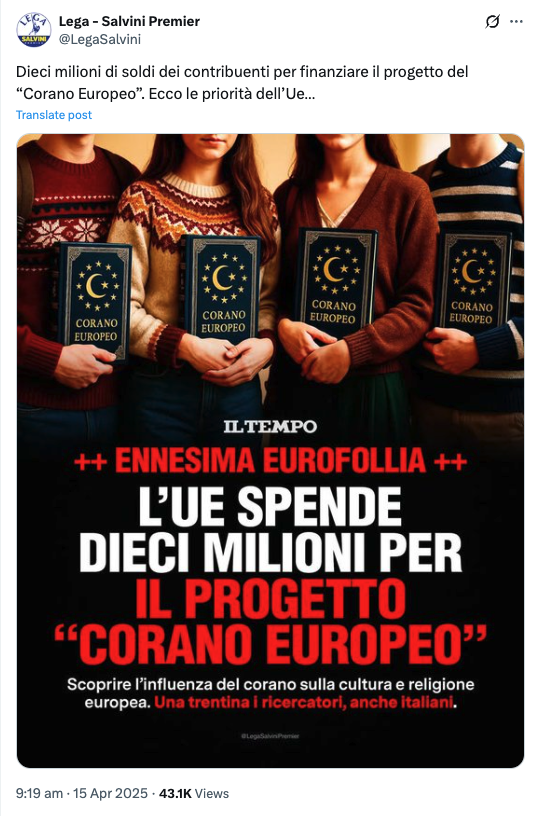DUBAI: Social media platform X, formerly Twitter, has dropped out of a ranking of global media brands by UK-based brand valuation and strategy consultancy Brand Finance.
The consultancy valued Twitter at $5.7 billion in 2022, falling to almost $3.9 billion in 2023 and further declining to $673.3 million in 2024.
Richard Haigh, managing director of Brand Finance, said the rebrand from Twitter to X was a “gamble” that had the potential to provide a “rebirth and propel it (the company) to new heights,” but now “the strategy seems to have been misguided.”
He told Arab News: “It is now evident that Elon Musk’s rebranding of Twitter, and abandonment of a globally recognized name, has resulted in a dramatic and abrupt decline in brand value and strength.”
Moreover, he added, Musk’s strategy to open up a free speech mandate lacked guardrails that would give advertisers confidence that their content would not appear alongside other content that did not match their brand values.
Haigh said: “These two decisions, intended to accelerate growth, ultimately resulted in a substantial loss of advertisers with ad revenue decreasing from over $1 billion per quarter in 2022 to around $600 million per quarter in 2023 — a steep decline for a brand where ad sales represent about three-quarters of total revenue.”
The report also found that X’s Brand Strength Index score, which measures the relative strength of brands based on factors such as marketing investment, stakeholder equity, and business performance, fell by 12.7 points from last year.
This drop is a reflection of the brand’s “weaker performance in familiarity, reputation, and recommendation metrics, underscoring a major reputational crisis,” Haigh said.
Although he is not optimistic about X’s rebound as a brand, he added: “X continues to be a relevant platform relied upon by millions, thanks to the long-term benefits of a user base and the critical mass it already has.”
He believes that “with careful management and a clear strategy, there remains potential for the X brand to recover and regain its strength.”
One such strategy could be rethinking the name because Twitter had a “distinctiveness that a single letter will struggle to match,” he said.
Secondly, he advised: “X is a business that requires consumers to use it, but also requires businesses to fund it. Trust is a key issue that needs to be addressed.”
Haigh explained that if brands are not confident that bullying, harassment and abuse will not be attached to their messaging, they will not have enough trust in the site to want to advertise.
The ranking saw Google maintain its No. 1 spot as the most valuable media brand for the fourth consecutive year, followed by TikTok in second place, Facebook and Instagram in third and fourth, and Disney in fifth place.
Instagram was the fastest-growing media brand, with an increase of nearly 50 percent in brand value, while Disney’s brand value dropped by 6 percent, compared to 2023.
Hollywood actors and screenwriters went on strike last year to protest about pay and working conditions which resulted in delays of several productions and loss of revenues for production companies.
Haigh said the strike “significantly impacted Disney’s revenue streams, contributing to its decline in brand value, but Disney+ (its streaming platform) has helped sustain its brand amid a rapidly evolving media landscape.”
The transformation of this landscape is evident in the ranking with Disney being the only traditional media company in the top 10.
The first Brand Finance ranking, which was published in 2015, was dominated by American broadcast media networks with Walt Disney ranking first, ahead of Fox, NBC, TimeWarner and CBS.
However, this year, “there has been a significant shift, with nine of the top 10 brands focusing on platforms other than traditional broadcasting, reflecting a growing trend toward media consumption through social media,” Haigh said.
He added that the media industry had evolved “from a broadcasting model to one centered around narrowcasting, where content is tailored to individual preferences.”
This has been accelerated by the rise of social media platforms that allow users to create and share content on a global scale, as well as technological advancements that enable platforms to provide “highly personalized and targeted media experiences,” he added.
Content that was once the domain of traditional TV channels — such as major sporting events and news — is now easily available online through social media or streaming.
Haigh said: “Despite widespread misinformation, more people are turning to social media for news as it provides diverse perspectives, short-form content, and allows for independent evaluation, unlike traditional media, which often offers a single, agenda-driven narrative.”
The 2023 Hollywood strike further accelerated the shift in the industry, causing a sharp decline in brand values for major US TV networks like CBS (28 percent) and Fox (26 percent), as well as UK networks Sky and ITV, he added.
Netflix, however, remained among the top 10 brands, ranking ninth, despite its brand value declining by 6 percent.
Haigh said: “To stay relevant, traditional media outlets must adapt to this new landscape, where engagement is driven by interactive and algorithm-driven content rather than broad, one-size-fits-all programming.”

































